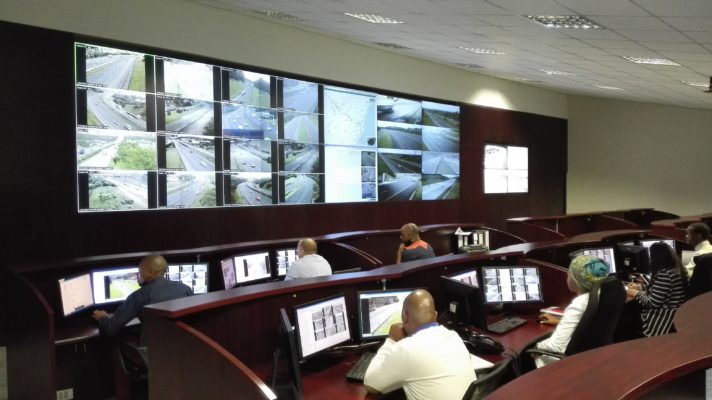System on strategic KwaZulu-Natal road sections provides real-time information to road users on possible obstructions.

Motorists using KwaZulu-Natal freeways can make smart decisions to remain safe and avoid congestion, thanks to the implementation of the Freeway Management System (FMS).
The system relays real-time information to alert motorists about incidents that could be unsafe and are likely to cause build-up of traffic and subsequent delays.
Dumisani Nkabinde, Eastern Region manager for the South African National Roads Agency (SOC) Limited (SANRAL), said: “A freeway can have six lanes but a single incident, such as a breakdown or a collision, can have a major impact on the flow of traffic in both directions.”
Nkabinde said the FMS consisted of technologies and strategies to monitor, control, and manage freeway traffic more effectively.
Safer roads and quicker travel times
SANRAL first embarked on the implementation of the FMS on strategic road sections in KwaZulu-Natal during 2009 following the successful pilot FMS implementation on the Ben Schoeman Highway in Gauteng.
The FMS system entails the active management of road networks using Intelligent Transport Systems (ITS) technologies. ITS involves the integrated deployment of communications technologies, traffic management software and control devices such as closed-circuit television cameras (CCTV), variable message signs (VMS) and traffic detectors to enable the active management and monitoring of freeways.
“The many benefits to the road user on such a managed network include improved congestion management, faster detection, verification and response to road incidents such as accidents, road obstructions and road hazards, as well as the provision of real-time traveller information to road users.
“These benefits directly result in safer roads, savings in travel times and fuel costs, as well as contributing to a cleaner environment,” said Nkabinde.
Detection time of 76 seconds per incident
The FMS in KwaZulu-Natal currently covers around 120km of the busiest sections of the N2 and N3 – from the Prospecton interchange on the N2, northward to the Watson Highway interchange, and on the N3 from the Candella Road bridge to the Market Road.
Further expansions are in the process of being implemented from Market Road to the Cedara Interchange, which includes the high-accident zone at Town Hill.
These freeway sections are equipped with 147 CCTV cameras, 26 VMS units and 57 radar vehicle detection units, all linked through a fibre optic communications backbone to a Traffic Management Centre (TMC) located at the SANRAL offices in Pietermaritzburg.
Nkabinde said incident detection and verification of times in KZN were impressive, with the average detection time down to 76 seconds.
“This is in large part accomplished by an efficient TMC operations team and an effective performance monitoring regime.
“The TMC works closely with and provides real-time traffic and accident information to the various authorities involved in road incident management, such as police and emergency services.
“To further improve the response to traffic incidents, officers from KZN provincial police are currently collocated at the TMC.”
The SANRAL TMC operates on a 24/7 basis and has 23 staff involved in road network monitoring and incident management.
It deals with an average of 800 traffic-related incidents every month. Stationary vehicles on the network (mostly heavy motor vehicles) account for just over half of all the traffic incidents detected.
Approximately 17% of the total traffic-related incidents are vehicle accidents, which equates to an average of 140 accidents per month. Most of these accidents (over 70%) involve light motor vehicles either in single or multiple vehicle collisions.
The freeway sections around the EB Cloete systems interchange (Spaghetti Junction) and the Umgeni interchange on the N2 record the highest number of traffic incidents.
SMS and Twitter alerts
A traveller information website www.i-traffic.co.za is also available to the public and provides useful information such as traffic conditions, road works, road conditions, congestion and traffic alert information.
Users can also register on site and subscribe for free SMSes and email traffic alerts. There is real-time viewing of the various camera feeds along the routes.
Traffic information is also posted via social media such as Twitter. Messages are posted via the @i_trafficKZN twitter account, which currently has around 175 000 followers.

